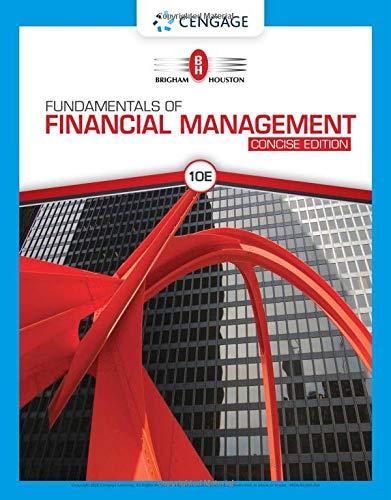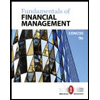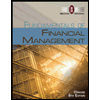The Cost of Capital: Weighted Average Cost of Capital The firm's target capital structure is the mix of debt, preferred stock, and common equity the firm plans to raise funds for its future projects. The target proportions of debt, preferred stock, and common equity, along with the cost of these components, are used to calculate the firm's weighted average cost of capital (WACC). If the firm will not have to issue new common stock, then the cost of retained earnings is used in the firm's WACC calculation. However, if the firm will have to issue new common stock, the cost of new common stock should be used in the firm's WACC calculation. Quantitative Problem: Barton Industries expects that its target capital structure for raising funds in the future for its capital budget will consist of 40% debt, 5% preferred stock, and 55% common equity. Note that the firm's marginal tax rate is 40%. Assume that the firm's cost of debt, rd, is 7.4%, the firm's cost of preferred stock, rp, is 6.9% and the firm's cost of equity is 11.4% for old equity, rs, and 12.19% for new equity, re. What is the firm's weighted average cost of capital (WACC1) if it uses retained earnings as its source of common equity? Round your answer to 3 decimal places. Do not round intermediate calculations. % What is the firm’s weighted average cost of capital (WACC2) if it has to issue new common stock? Round your answer to 3 decimal places. Do not round intermediate calculations.
Cost of Capital
Shareholders and investors who invest into the capital of the firm desire to have a suitable return on their investment funding. The cost of capital reflects what shareholders expect. It is a discount rate for converting expected cash flow into present cash flow.
Capital Structure
Capital structure is the combination of debt and equity employed by an organization in order to take care of its operations. It is an important concept in corporate finance and is expressed in the form of a debt-equity ratio.
Weighted Average Cost of Capital
The Weighted Average Cost of Capital is a tool used for calculating the cost of capital for a firm wherein proportional weightage is assigned to each category of capital. It can also be defined as the average amount that a firm needs to pay its stakeholders and for its security to finance the assets. The most commonly used sources of capital include common stocks, bonds, long-term debts, etc. The increase in weighted average cost of capital is an indicator of a decrease in the valuation of a firm and an increase in its risk.
The Cost of Capital: Weighted Average Cost of Capital
The firm's target capital structure is the mix of debt,
Quantitative Problem: Barton Industries expects that its target capital structure for raising funds in the future for its capital budget will consist of 40% debt, 5% preferred stock, and 55% common equity. Note that the firm's marginal tax rate is 40%. Assume that the firm's cost of debt, rd, is 7.4%, the firm's cost of preferred stock, rp, is 6.9% and the firm's
%
What is the firm’s weighted average cost of capital (WACC2) if it has to issue new common stock? Round your answer to 3 decimal places. Do not round intermediate calculations.
Trending now
This is a popular solution!
Step by step
Solved in 2 steps with 2 images









